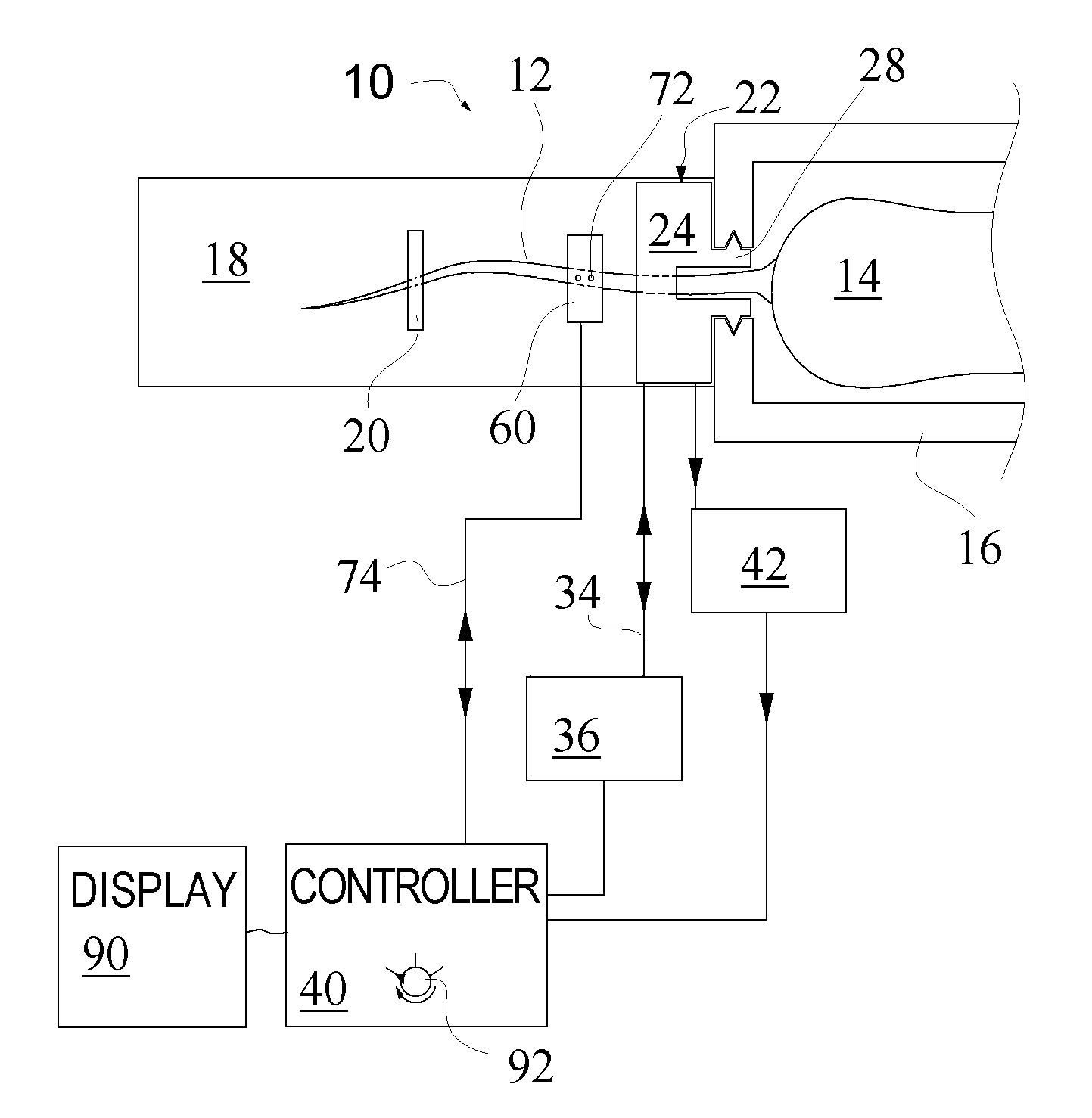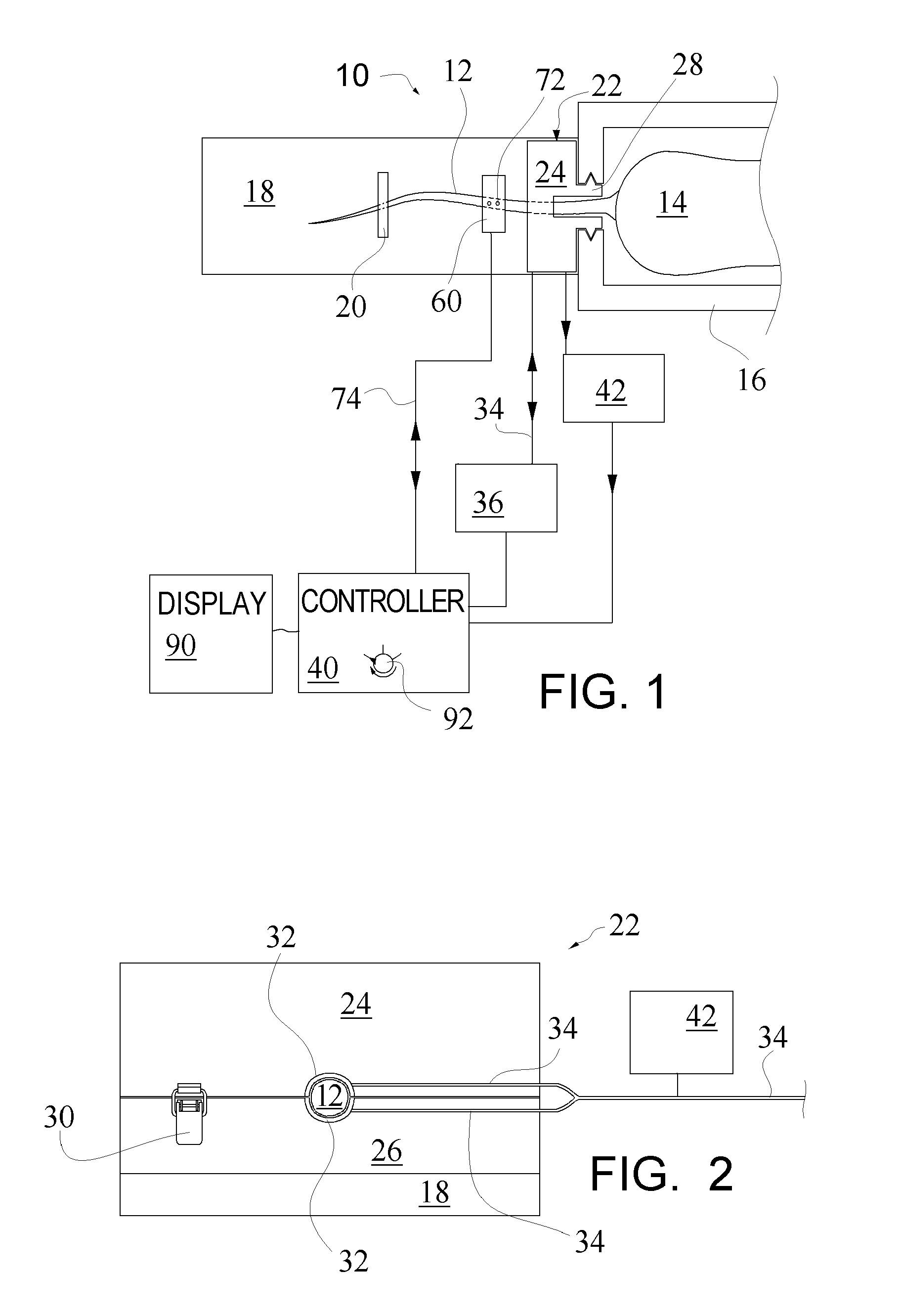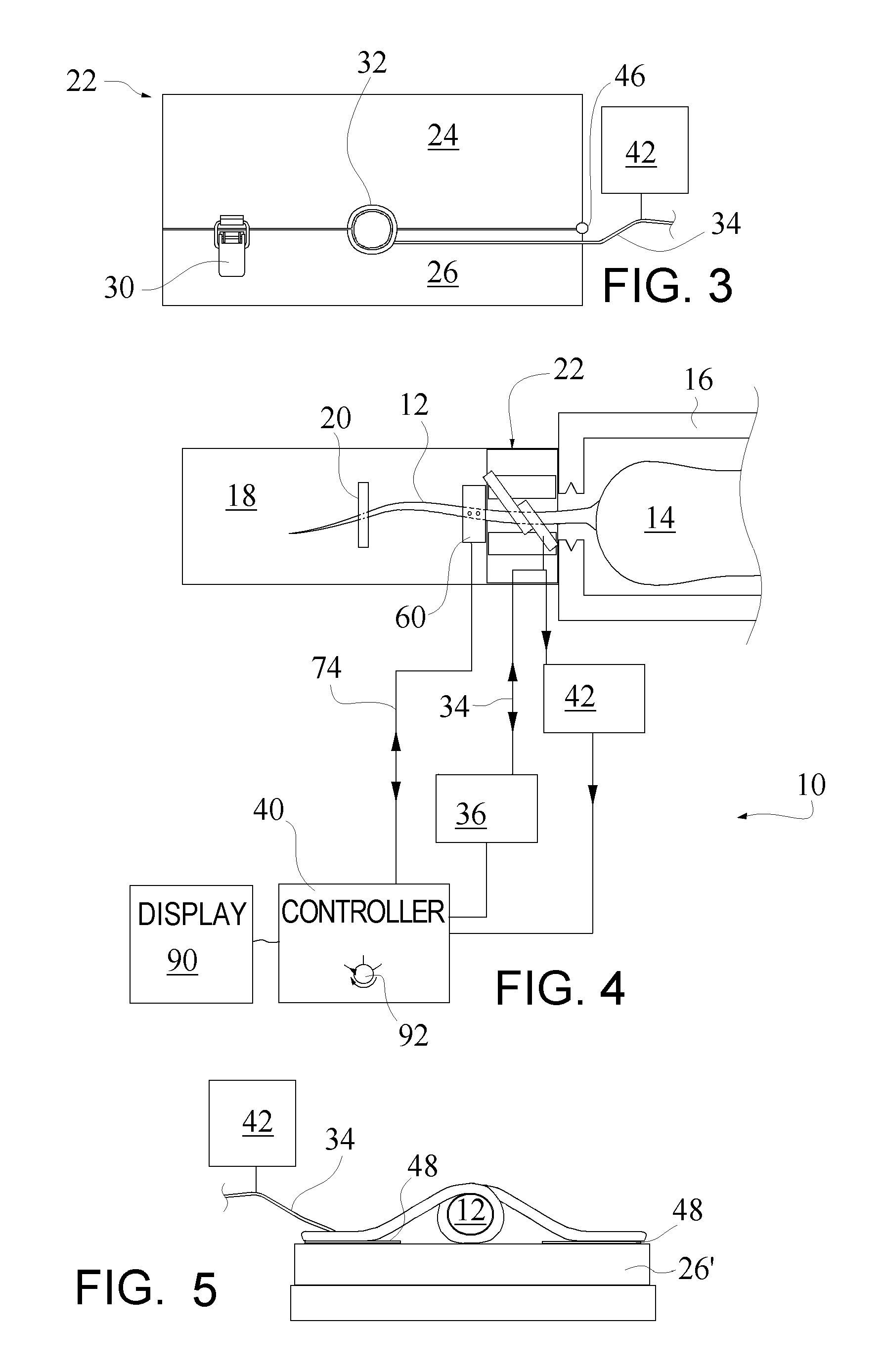Blood pressure monitor and pulse oximeter system for animal research
- Summary
- Abstract
- Description
- Claims
- Application Information
AI Technical Summary
Benefits of technology
Problems solved by technology
Method used
Image
Examples
first embodiment
[0043]FIG. 2 illustrates the tail blood flow occlusion member 22 using a two housing halves 24 and 26 that are selectively movable toward and away from each other. The lower half 26 can be secured to the tail support board 18 and the upper half 24 can be moveable in a slide 28 that engages rails formed in the holder 16. The weight of the upper half 24 may be such that it is held in a closed position via gravity, or a latch 30 may be used to secure the halves 24 and 26 together in the closed, operative position. With the formation of the tail blood flow occlusion member as two halves the tail 12 need not be “threaded” through a closed opening. Once the tail 12 is properly positioned on the board 18 on top of the lower half 26, the upper half 24 can be slid into position.
[0044]The upper and lower halves 24 and 26 include aligned tail receiving recesses as shown. Further each recess includes a respective inflatable tail cuff portion 32. With the tail 12 in the recesses and the upper an...
second embodiment
[0045]FIG. 3 illustrates the tail blood flow occlusion member 22 using a two housing halves 24 and 26 that are selectively movable toward and away from each other. In this embodiment the halves 24 and 26 are pivoted together at pivot 46. A latch 30 may be used to secure the halves 24 and 26 together in the closed, operative position. This embodiment may be easily positioned “vertically” whereby the parting line between the halves is vertical so that it opens upwardly to assist in the tail placement. The attachment of one half 24 or 26 to the board 18 can be made to accommodate the open position of the other half for easy placement of the tail 12. With the formation of the tail blood flow occlusion member as two halves the tail 12 need not be “threaded” through a closed opening. Once the tail 12 is properly positioned within the opened halves 24 and 26, the halves 24 and 26 are closed and latched.
[0046]The halves 24 and 26 include aligned tail receiving recesses as shown. Further the...
PUM
 Login to View More
Login to View More Abstract
Description
Claims
Application Information
 Login to View More
Login to View More - R&D
- Intellectual Property
- Life Sciences
- Materials
- Tech Scout
- Unparalleled Data Quality
- Higher Quality Content
- 60% Fewer Hallucinations
Browse by: Latest US Patents, China's latest patents, Technical Efficacy Thesaurus, Application Domain, Technology Topic, Popular Technical Reports.
© 2025 PatSnap. All rights reserved.Legal|Privacy policy|Modern Slavery Act Transparency Statement|Sitemap|About US| Contact US: help@patsnap.com



